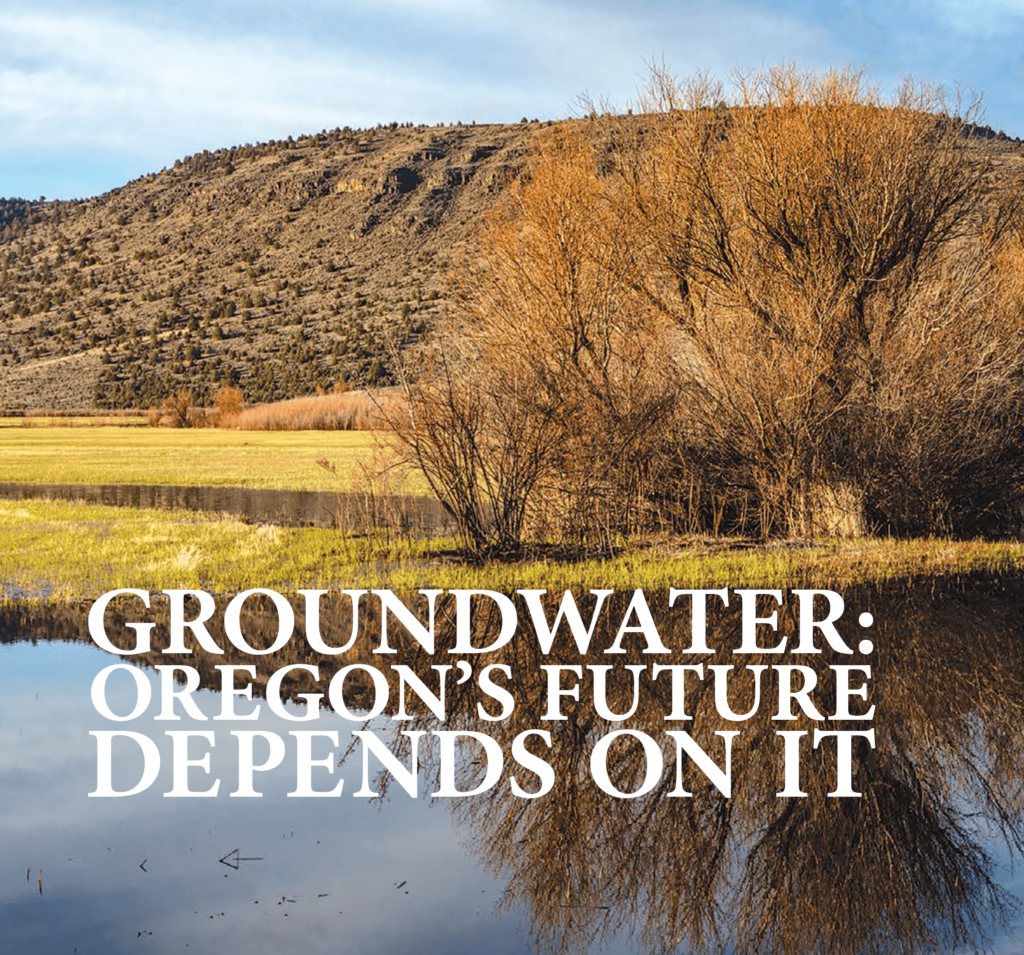By John DeVoe | April 5, 2022 | Stream of Consciousness
Oregon is in the midst of a groundwater crisis, a crisis that, if left unaddressed, will cripple the state’s water future in a climate-changed world. Though some areas of Oregon are already in a groundwater crisis, we can prevent this crisis from spreading to other basins.
Since our founding in 1985, WaterWatch has been Oregon’s leading innovator and advocate for actions and policies to address, and, where possible, reverse, rapidly declining groundwater levels; to provide in depth insight on the consequences of diminishing groundwater reserves to ecosystems, economies, and Oregonians; and to prevent this crisis from spreading to other basins in our state.
Groundwater is a critical source of cold, clean water that feeds many of the state’s most important rivers and wetlands complexes, particularly during the dry season when streams and wetlands need water the most. Over a million Oregonians rely on groundwater for drinking water, largely in rural parts of the state. Of course, important parts of Oregon’s economy also rely on groundwater. Oregon’s environmental and economic future depend on groundwater, yet our spendthrift approach to allocating and managing groundwater puts ecosystems, communities and much of the state at risk.
WaterWatch has been tracking declining groundwater levels throughout Oregon. There is little dispute declining aquifers in many parts of Oregon result, in large part and directly, from Oregon’s mismanagement of groundwater permitting policy and process. Oregon is simply giving away water rights for groundwater in areas where the state lacks data to know whether groundwater is available for the new use, and, in what defies comprehension, also in areas where groundwater is already known to be in serious decline. Existing data already demonstrates that in many areas of Oregon, aquifer declines coincide closely with excessive groundwater permitting by the state.
The results? Warmer rivers, dry wetlands, dry rural residential wells, water conflicts and declining aquifers in many parts of the state.
WaterWatch’s Vision for Oregon’s Groundwater Future is Pretty Simple
We believe Oregon has an obligation to make sustainable groundwater allocation and management decisions — for streams, wetlands, and for people and communities. What does “sustainable groundwater allocation and management” mean? It means that Oregon should use existing data and collect more data where needed to understand the state’s aquifers and apply that understanding to management of the groundwater. It means it’s time to reform certain agency policies and practices around groundwater that fail to maintain aquifer levels that meet the needs of rivers, cold water species, wetlands, waterfowl, and communities. It means it’s time to stop saddling communities, the environment and future Oregonians with tremendous hardship that is largely avoidable.
In this edition of Instream, you’ll find advocacy for protecting groundwater as a source of clean, cold water that feeds rivers and streams and supports aquatic and bird species and habitat. You’ll find material on why groundwater is so important to Oregon’s ecosystems, economy, and quality of life. And, hopefully, you’ll be encouraged to support reforms that are essential to protect and restore groundwater that gives life to Oregon waterways.
While some basins in Oregon are already in a groundwater crisis, we can prevent the crisis from spreading. With your help, reform is possible.
This piece by John DeVoe originally appeared as the Stream of Consciousness column in the April 2022 edition of WaterWatch’s Instream newsletter.

